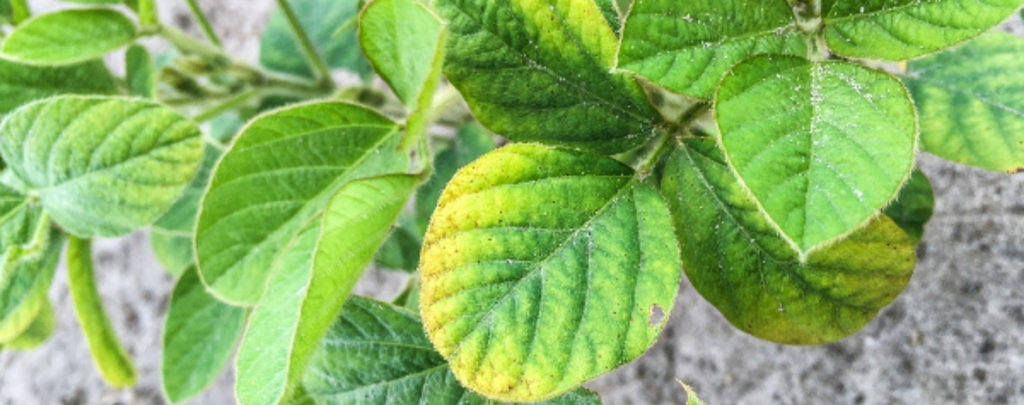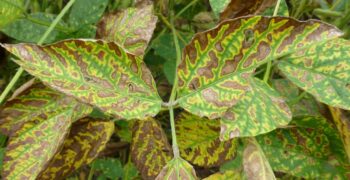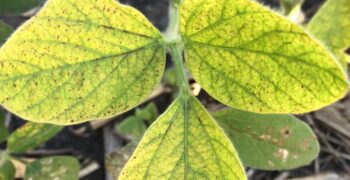Background:
Most symptoms of potassium deficiency will occur in the middle or upper canopy in the soybean crop. This can be common in low lying fields where soil test values may already be low in total K in the first place. Symptoms can occur early or late in the growing stage of the plant. Symptoms usually start in the early season. However, deficiency signs can begin to show in the upper leaves during reproductive stages. They will really begin to show after heavy rainfalls or drought events.
Symptoms:
Symptoms will include the following:
- Yellow and reddening dying leaves on older during vegetative growth and upper during grain fill
- Yellowing occurs on the outside part of the leaf and not the inter part of the leaves
- Slow growth and being stunted
- Purple seed stain, wrinkled seeds,
- Ragged look on older leaves
This deficiency can typically begin in the early to late V3 stages, but if it becomes too severe, it will move up the leaves with each stage progressing. Symptoms can stay on leaves up until the reproductive stages depending on how severe it is.
Potassium Deficiency and IDC:
Many times farmers can confuse this deficiency with IDC. There is one very simple way to differentiate the two. IDC yellowing and browning will be more in the interveinal area where potassium will surround the outside edge of the leaf.
What can you do:
The first step is to start off by doing soil sampling. Fertilizer treatment with GPS will be the most efficient way to variable rate locations throughout the field that need it. This should be done before or after planting.
Sources:
Soybean Potassium Deficiency Symptoms During Early and Late Growing Stages



